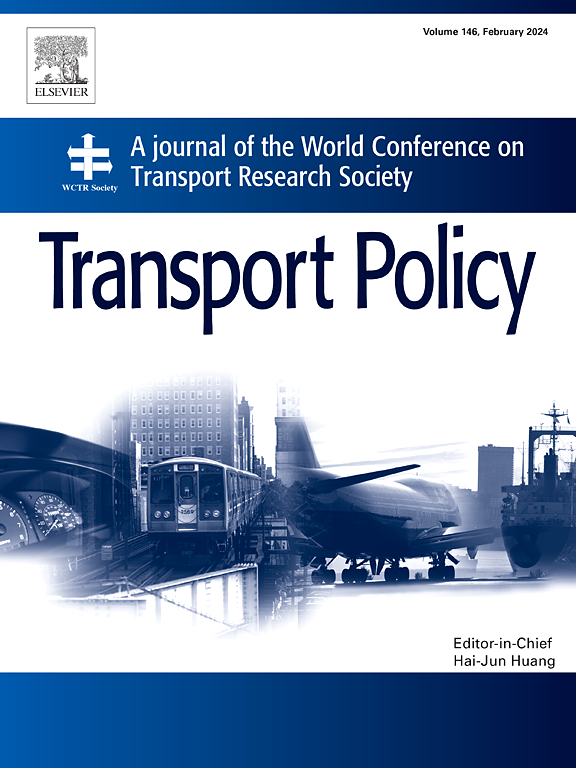Integrating user values assessment with the augmented RFM model to enhance bus transit systems’ market segmentation
IF 6.3
2区 工程技术
Q1 ECONOMICS
引用次数: 0
Abstract
Understanding “who deserves retention” is pivotal to save the recent bus ridership decline. Despite efforts in segmenting bus riders into various behavior statuses, which riders who need, and even deserve, intervention policies to retain are largely unknown, making it impossible to allocate limited retention resources in a precise manner. To address this critical issue, we augment traditional RFM models with retention policy-sensitivity and transit mode-preference dimensions to capture bus riders' user value index by employing the multi-category factor analysis to evaluate riders’ behavioral loyalty, intentional loyalty, consumption potential, and recent activity level with the Analytic Hierarchy Process and expert interviews. Based on the four evaluation metrics, we cluster the riders into five segments: High-potential, Possible churn, Regular, Bus-dependent, and Loyal and recommend targeted retention policies to suit the characteristics of these five segments. The proposed transit rider segmentation framework is supposed to provide references for transit operators to find the potential churners and those who need to be retained among the identified potential churners.
将用户价值评估与增强RFM模型相结合,增强公交系统的市场细分
了解“谁值得保留”是挽救最近公交客流量下降的关键。尽管努力将公交乘客划分为不同的行为状态,但哪些乘客需要甚至值得保留干预政策,这在很大程度上是未知的,这使得不可能以精确的方式分配有限的保留资源。为了解决这一关键问题,我们在传统RFM模型的基础上增加了保留策略敏感性和公交模式偏好维度,通过多类别因素分析,利用层次分析法和专家访谈,评估了乘客的行为忠诚度、故意忠诚度、消费潜力和最近的活动水平,从而获得了公交乘客的用户价值指数。基于四个评估指标,我们将乘客分为五个部分:高潜力,可能流失,常规,公交依赖和忠诚,并建议有针对性的保留政策,以适应这五个部分的特点。提出的公交乘客细分框架旨在为公交运营商提供参考,以便在确定的潜在流失人群中找到潜在流失人群和需要保留的潜在流失人群。
本文章由计算机程序翻译,如有差异,请以英文原文为准。
求助全文
约1分钟内获得全文
求助全文
来源期刊

Transport Policy
Multiple-
CiteScore
12.10
自引率
10.30%
发文量
282
期刊介绍:
Transport Policy is an international journal aimed at bridging the gap between theory and practice in transport. Its subject areas reflect the concerns of policymakers in government, industry, voluntary organisations and the public at large, providing independent, original and rigorous analysis to understand how policy decisions have been taken, monitor their effects, and suggest how they may be improved. The journal treats the transport sector comprehensively, and in the context of other sectors including energy, housing, industry and planning. All modes are covered: land, sea and air; road and rail; public and private; motorised and non-motorised; passenger and freight.
 求助内容:
求助内容: 应助结果提醒方式:
应助结果提醒方式:


